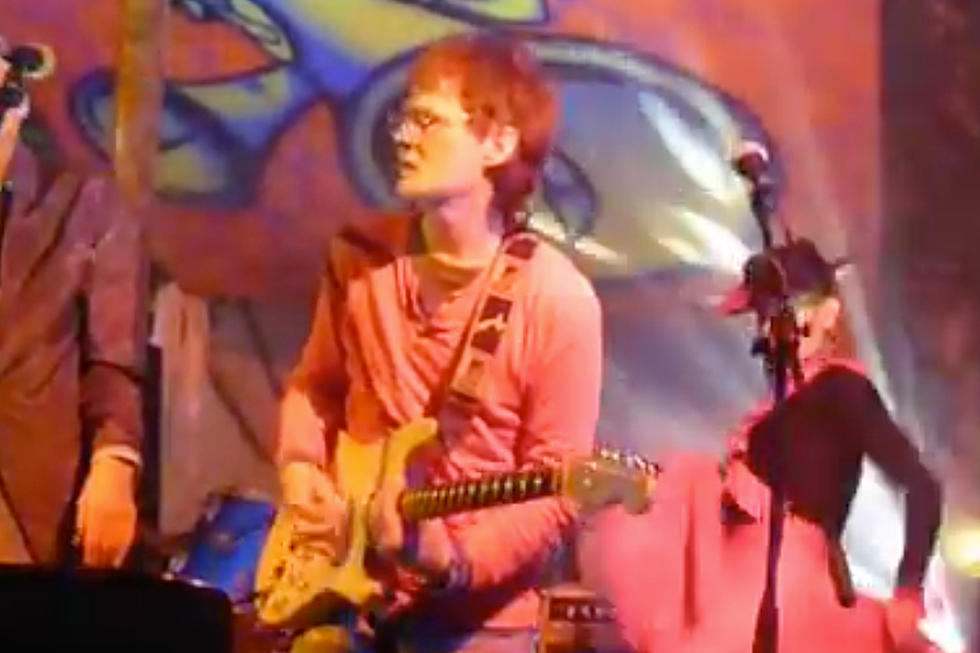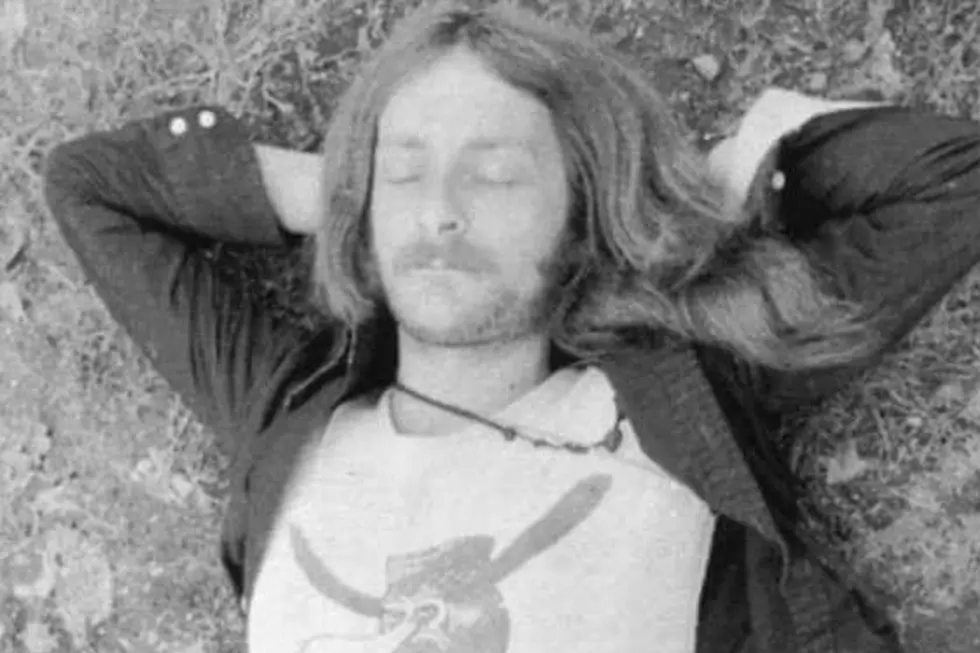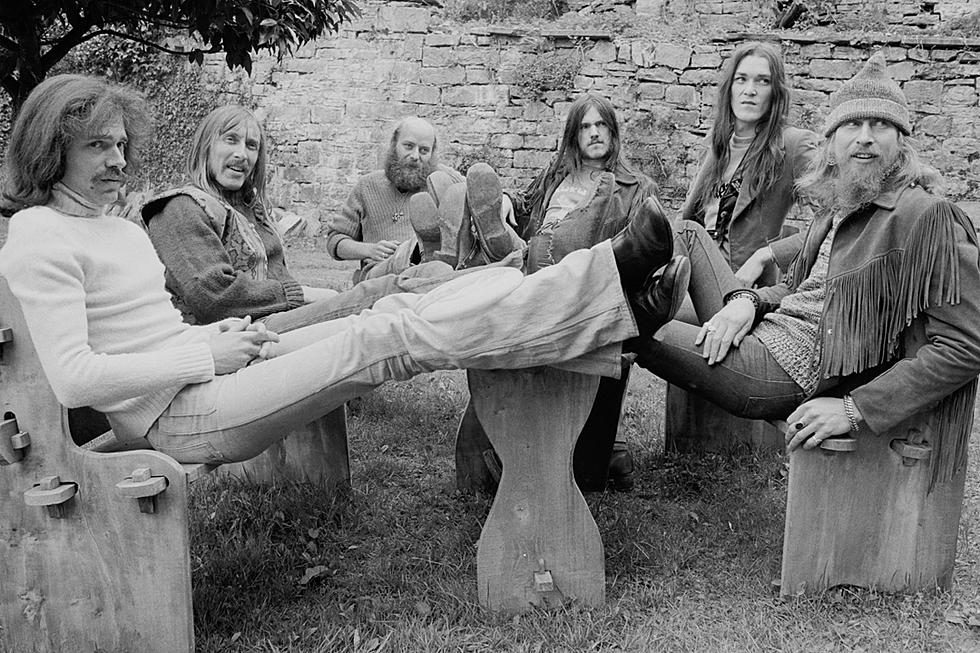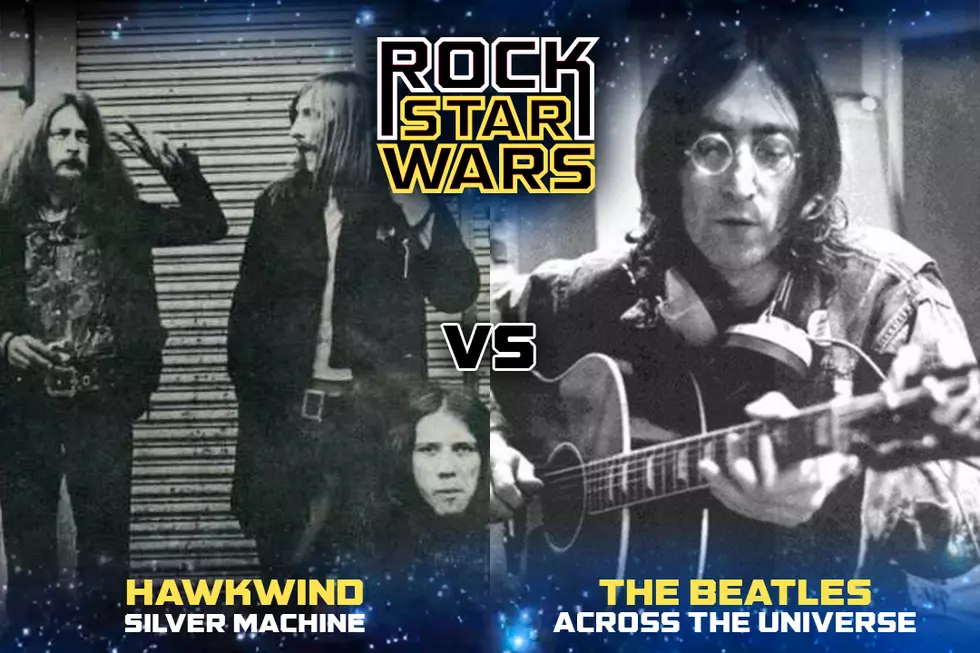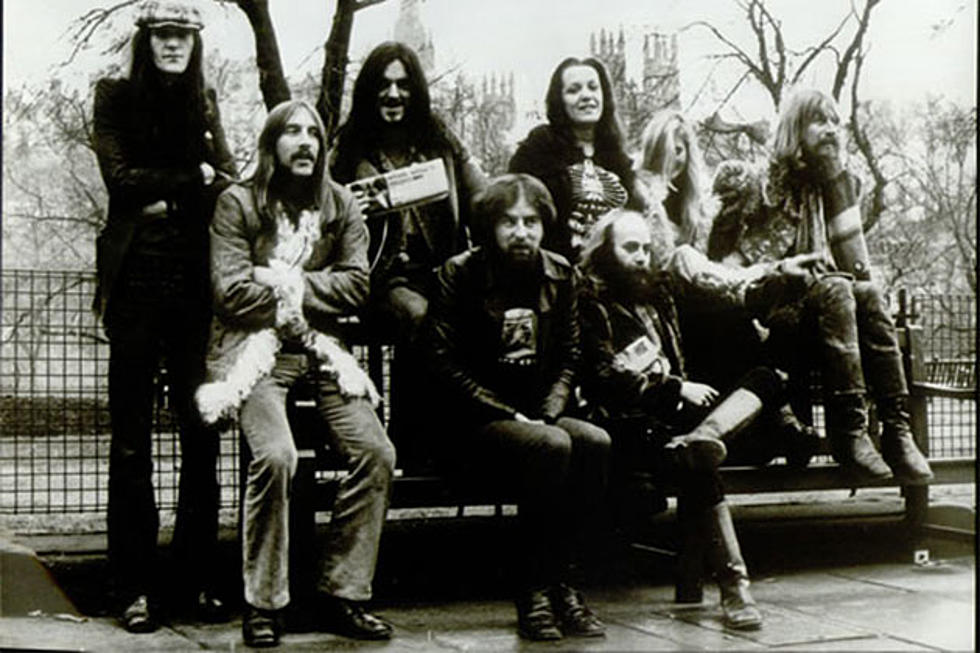
Everything You Need to Know About Hawkwind
With Everything You Need to Know About Hawkwind, we take you inside a band that represented the flip side of psychedelia -- far away from the peace, love and flowers adopted by so many from the era. Instead, Hawkwind (along with the Deviants, the Pink Fairies and the Edgar Broughton Band) took psychedelia and twisted it into their own distinct sound. It was one defined by a rough, anarchic, street-level mentality. In a way, they drained any intellectualism associated with the psychedelic experience from the mix, distilling it to its purest hallucinogenic form. Still, many music fans are largely unaware of the band's many contributions. Are you one of them? Well, here's Everything You Need to Know About Hawkwind ...
Overview
YEARS OF OPERATION: 1969 - Present
ORIGINAL LINEUP: Dave Brock – vocals, guitars / Nik Turner – saxophone, flute, vocals / Mick Slattery - guitar (left before they made their first album) / Dik Mik – keyboards, synthesisers / Terry Ollis – drums / the late John Harrison – bass / the late Huw Lloyd Langton – guitar, vocals
CLASSIC LINEUP (1971-75): Dave Brock – guitar, vocals / Nik Turner – saxophone, flute, vocals / Lemmy (Ian Kilmister) – bass guitar, vocals / Dik Mik – keyboards, electronics / Del Dettmar – synthesizers / Simon King – drums / Robert Calvert – vocals
KEY DISCOGRAPHY: In Search of Space (1971) / Doremi Fasol Latido (1972) / Space Ritual (1973) / In the Hall of the Mountain Grill (1974) / Warrior on the Edge of Time (1975) / Quark, Strangeness and Charm (1977)
History
Hawkwind actually began as an outgrowth of the psychedelic movement. Leader Dave Brock first got his feet wet with an acoustic guitar, busking on street corners. He soon joined forces with Nik Turner and Mick Slatery to form Group X. With the addition of Dik Mik, Terry Ollis and Huw Lloyd Langton, and the departure of Slatery, they took on the name Hawkwind -- then replaced a "doors of perception" motif with a more science fiction-themed take, thanks to author Michael Moorcock, and Robert Calvert.
In addition, they emphasized the pulsing urgency of the rhythm as much as the ethereal -- helpig to create "space rock." The band had a surprise hit single in the summer of 1972 with "Silver Machine," which rose to No. 3 in the UK charts. Their live shows remain the stuff of legend. It was an over-the-top sensory overload complete with naked dancer, disorienting light show, and volume set very, very loud.
That same year, they took the show on the road with the legendary Space Ritual tour. "It was like Star Trek with long hair ... and drugs," said Lemmy in a BBC Hawkwind documentary. "We weren't like the f--in' Pink Floyd," he continued, "We were like a f--in' black nightmare. We used to lock the doors so people couldn't get out!"
Legacy
Their influence can be found over many years and various sub genres. Just as "stoner rock" bands such as Monster Magnet and Kyuss, shoegazers like My Bloody Valentine or Spiritualized, or punk pioneers John Lydon and Jello Biafra.
Many members, somewhere around 50, would wander through the history of Hawkwind, but none as prominent as Lemmy. After being fired from the band by Brock in 1975 for carrying drugs across the border to Canada, Lemmy wasted no time in getting his own band together. Named after his the title of his final contribution to Hawkwind, Motorhead went on to change the sound and shape of hard rock for years to follow. Dave Brock still carries on under the Hawkwind name, though he is the sole original member. In recent years, he has incorporated elements of techno and rave into the mix.
The band has, seemingly, always been surrounded by internal drama ranging from ego, to drugs, to mental illness. After years of legal squabbles between Nik Turner and Dave Brock over the rights to the name, Nik was finally allowed to use the name 'Nik Turner's Hawkwind' in his concert billings, and in staying true to the classic early '70s sound, he represents their legacy very convincingly. In 2010, former members Harvey Bainbridge and Adrian Shaw regrouped under the name Hawkords (the name of a one-off studio LP from 1978) emphasizing the more streamlined style of the late-'70s Hawkwind lineup.
Epilogue
Over the years, the legend and influence of Hawkwind has continued to grow. Though written off by many over the years as nothing more than a bunch of long-haired stoners, time has proven their catalog to be a more varied animal, gaining them much deserved respect over time. Of their many releases, most of the prime catalog remains easily available. Though they have been with us for going on 50 years, it is Hawkwind's first decade that remains the cornerstone of their legacy.
More From Ultimate Classic Rock

